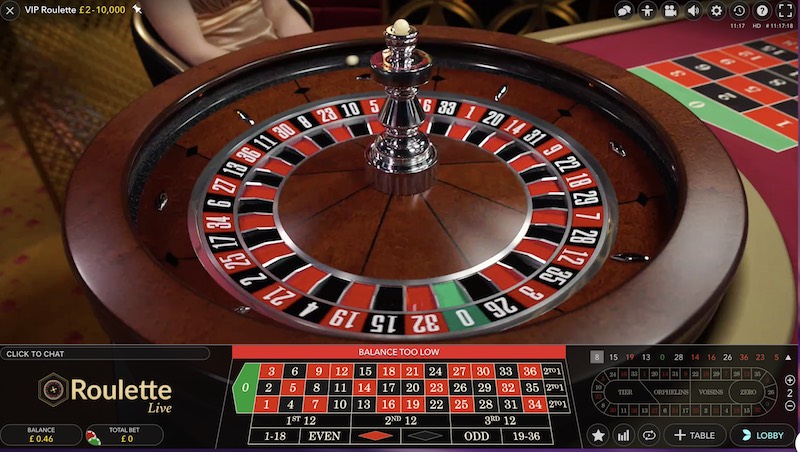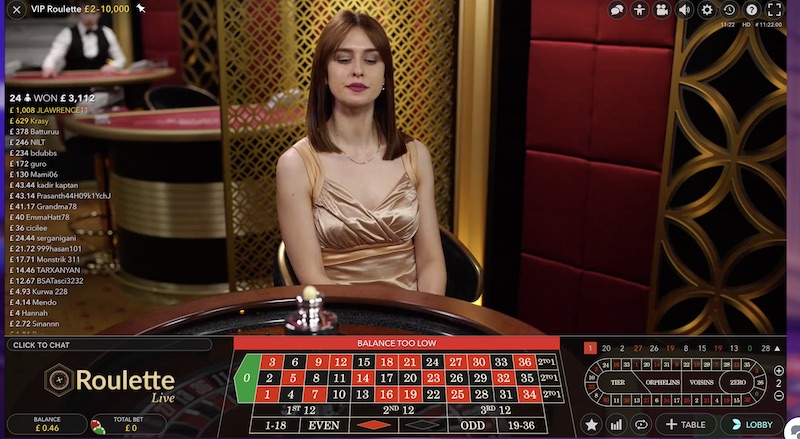Roulette is one of the world’s most enduring and popular casino games for good reason. The action is fast, it’s simple to understand and it’s up to you how much risk you wish to take. You might place a small bet on a red or a black number coming up with even-money odds because it’s a 50/50 chance, or back a single number at 35/1.
For all players this is a comprehensive guide to this iconic casino game format, including four of the most popular strategies to ‘beat the house’. You can start with the basics, or if you already know the background and how to play you can jump straight into the good stuff here:
- The martingale strategy
- The reverse martingale strategy
- The progressive bet roulette strategy
- The d’Alembert roulette strategy
What is roulette?
Roulette is named after the French word for little wheel. It uses a rotating wheel with 36 numbers split between red and black. Players choose to bet on any single number or a group of numbers based on the table layout. They can also back that the number is red or black, or odd or even.
The croupier spins a small white ball around the rotating wheel, and when it comes to rest, falling in one of the numbered segments, the players who have chosen the winning number (or colour) as part of their bet, wins a payout according to the set odds.
The house edge comes about because there is also one green number zero on the wheel in the European version of the game, and a zero AND double zero green segments in the US version. If the ball lands in any of these green segments, players lose their bets unless they specifically bet on the zero or double zero coming up (more on this later).
So, while you get paid 35/1 for backing a single number between 1 and 36, there is one (or two in the US) further numbers in play. In theory, therefore, you will only hit your number one in 37 times (European and French roulette) or 38 times (American roulette) but still only get a 35/1 payout. The edge in the European version is, therefore, 2.70%, while the American version is higher at 5.26% because there is a green zero and double zero in play which can nullify players’ bets.

Live Roulette at Casumo
How to play roulette
The game is one of the easiest to play. Collect some chips, or use your balance if you’re playing online, and place bets on the table in any fashion you like. Multiple single numbers, groups of numbers, red or black, odd or even; the choice is yours.
The croupier will announce no more bets as the white ball spins in the wheel, and now it’s that moment of excitement to see where the ball lands.
The house pays out winning bets, and everyone else watches sadly as their chips are taken from the table.
But the good news is there’s always another round, and before you know it, you’re being encouraged by the croupier to “place your bets”.
Do you haphazardly place your bets, or try to spot a pattern from recent rounds? Perhaps you wish to employ some of the better- known betting strategies? If so, read on because we have you covered.
What’s the difference between American, European and French roulette?
American roulette is most used in the US, featuring that single and double zero green segments in the wheel. It gives the casino a higher edge, which is why you’ll be hard-pressed to find a European roulette game in Vegas. They do exist, but they’re likely to come with higher minimum stakes.
The European version has that single green zero segment and is commonly found in, not surprisingly, Europe.
French roulette also features a single green zero but offers players more protection in the form of an “en prison” or half-back rule. If the ball lands in zero, any player with an even money bet, so odd or even, red or black, 1-18 or 19-36 will get half of it returned.
However, the player may decide to imprison the bet, meaning it remains on the table for the next spin. If it wins, the player gets the whole bet back but no winnings. Quite what happens if the ball falls on zero for a second successive time, is up to each casino’s house rules.

Live Dealer Roulette Table
Roulette volatility
You might often hear the term volatility in betting games. In roulette, the game can be as high or low volatility as you like. High volatility means you’ll get bigger payouts but less often. Low volatility means low but regular payouts. As such, you must adjust how much you bet each time depending on the volatility.
- A low volatility example would be backing red or black – there are 18 winning numbers and 19 losing ones (because of the extra green zero), so you won’t have long winning or losing streaks
- A high volatility example would be to always bet on the same number. Now you have only one winning chance while 36 others are losing numbers (35 other normal numbers and the green zero). Hence, if you take on this bet, you will win a large return (35/1), but you must hope your number comes up sooner than later.
Now you understand the basics of how the game works, let’s look at some well-known strategies that many players believe improve their chances of winning.
The Martingale Strategy
The Martingale Strategy is the most commonly used because it’s so simple to understand. You pick an even money bet, like red or black, and bet a small amount. If you win, you make another even money bet.
Keep doing this until you lose. Now, double your next bet. If you lose again, double up once more and so on.
The idea is you will get to win again, in which case you get your bet returned and matched by the house, plus you will have one a low bet or two before you began doubling up.
In theory, it means you will always make a small profit over each run of the session. But in reality, there is the elephant in the room in the shape of the green zero – adding to your loss possibilities.
Another danger is a freak run of results against, potentially wiping out your bankroll (remember you double your stake each time you lose). Another possible problem is that some tables will have betting limits, which you might reach swiftly.
It’s fun to give it a go, however, so long as your pockets are deep enough to take a poor run of luck.
The Reverse Martingale Strategy
The reverse martingale strategy is essentially the reverse of the above. This time, you double your bet each time you win. Here’s how it works:
- Begin with a set amount of chips and a target amount to win (within reason!)
- Wager a small amount first
- Keep going with the small bets until you win, then use your original bet plus the winnings to make the same betting choice again.
- Keep going until your target is met, or if you lose, you must start back at your original bet.
- The strategy has two outcomes – you lose your bankroll, or you meet your target. Just make sure you walk away with that profit!
The Progressive Bet Roulette Strategy
This strategy is like the reverse martingale strategy, in that you increase your bet after every win, returning down to your original after each low loss. However, the amount you increase your bet by decreases. Here’s how it works:
- Begin with a set amount of chips and a target to win
- Wager a small amount first, but on a bet higher than even money, so, for example, choose a corner bet, which is an inside bet selecting a group of four numbers, paying out at 8/1
- Repeat until you win
- Rather than place the whole lot on the next spin, retain half the winnings (or any percentage you determine before playing) and play again.
- Keep going until your target is met, or you lose your bankroll!
D’Alembert Roulette Strategy
The d’Alembert strategy is another form of progression bet, but it comes with smaller bet increases, so seems less volatile. Here’s how it works:
- Bet a small amount on an even-money bet (red/black or odd/even)
- If you lose, increase your bet size by one
- Repeat if you lose again, but increasing by one (not doubling)
- When you win, decrease by one and so on
- At some point, and without having wagered a single large amount, you might come out in profit
You can see this system is less risky, and you won’t end up needing to wager high amounts. However, profits will be slim, and you must be disciplined and able to walk away.
Conclusion
It’s true to say that adopting one of these common roulette strategies might increase your chances of making a profit. However, no betting strategy is foolproof. If it were, every casino would go bust within days!
You should, therefore, treat each of these as an entertaining way to try and increase your chances.
As with all gambling games, always play responsibly and keep in mind that roulette is a game of chance.
Good luck at the tables!

